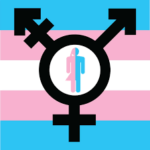Sudden Onset Gender Dysphoria (SOGD) is a term that has gained traction in recent years, particularly among adolescents and young adults. Unlike the more commonly discussed traditional gender dysphoria, which typically manifests in early childhood and continues into adolescence or adulthood, SOGD appears rather abruptly. This phenomenon can take both individuals and their families by surprise, leading to confusion, distress, and a myriad of questions about identity and transition. In this article, we’ll explore what SOGD is, the factors that may contribute to its emergence, and how those affected can navigate this complex emotional landscape.
Gender is a multifaceted aspect of personal identity, and understanding the sudden onset of dysphoria requires a holistic approach. Let’s dive deeper into the various dimensions of this experience, shedding light on how it manifests and what can be done to support those going through it. Transgender Mtf
Understanding Sudden Onset Gender Dysphoria: A Primer
Sudden Onset Gender Dysphoria refers to the rapid onset of distress related to one’s gender identity, often occurring in children and adolescents during or after puberty. This condition can emerge seemingly out of nowhere, catching both individuals and their families off guard. SOGD can lead to feelings of anxiety, depression, and confusion, as individuals grapple with their identities and the societal expectations surrounding gender. The onset of these feelings can feel particularly intense, often coinciding with significant life changes, such as starting high school or experiencing a major family transition.
The crucial aspect of SOGD is its unpredictability. Unlike traditional gender dysphoria, which unfolds over years and is often present from an early age, SOGD can appear almost overnight. Some individuals might have previously identified with their assigned gender, only to question and reject that identity later on. This can result in a sense of urgency to explore new identities, often leading to a desire for social or medical transition. Understanding SOGD involves recognizing not only the psychological components but also the social dynamics at play, including peer interactions and cultural influences.
Factors Contributing to Sudden Onset Gender Dysphoria
Several factors may contribute to the onset of SOGD. One significant aspect is the social environment. Adolescents are especially sensitive to peer opinions and societal norms, which can heavily influence their self-perception. Many young people may discover new aspects of their identity through social media, discussions with friends, or exposure to diverse gender identities. This newfound awareness can trigger introspection and, subsequently, feelings of dysphoria when they realize their assigned gender doesn’t align with their evolving sense of self.
Another contributing factor is mental health. Teenage years are often fraught with emotional upheaval, making individuals more vulnerable to anxiety and depression. In some cases, mental health challenges may manifest as a sudden questioning of gender identity. As young people navigate the pressures of adolescence, including academic stress and identity formation, any underlying issues can become magnified, leading to a crisis of identity that may be labeled as SOGD. Understanding these factors can help caregivers and peers provide the appropriate support and guidance during this pivotal time.
Signs and Symptoms: How to Recognize the Condition
Recognizing SOGD can be challenging, especially since the onset can be so abrupt. Common signs may include a marked increase in distress related to gender identity, a strong desire to change one’s appearance or name, and withdrawal from previously enjoyed activities. Individuals may express feelings of discomfort with their assigned gender, often accompanied by intense emotions. Observers might notice behavioral changes, such as a newfound interest in clothing or activities traditionally associated with a different gender.
Additionally, feelings of isolation and confusion can manifest when discussing gender identity. It’s not uncommon for individuals experiencing SOGD to feel misunderstood or dismissed by peers and family members. They may express a desire for more understanding or a need to explore different gender expressions. Being attuned to these signs is essential for helping individuals navigate their feelings and find the support they need. Open communication and a willingness to listen can make a significant difference during this tumultuous time.
Sudden Onset vs. Traditional Gender Dysphoria: Key Differences
One of the primary distinctions between Sudden Onset Gender Dysphoria and traditional gender dysphoria lies in the timeline of onset. Traditional gender dysphoria typically begins in early childhood and persists through adolescence and adulthood. In contrast, SOGD occurs unexpectedly during adolescence, often triggered by life events or shifts in social dynamics. This makes SOGD unique in how it challenges both the individual and their loved ones, as the rapid change can lead to confusion regarding the authenticity of the experience.
Moreover, the journey through SOGD can differ significantly from the more prolonged journey of traditional gender dysphoria. Those experiencing SOGD may feel a sense of urgency to explore their identity quickly, which can create additional pressure. Family dynamics may also be impacted differently; families accustomed to a certain gender presentation may need to recalibrate their understanding and support systems almost overnight. Recognizing these differences is vital for providing appropriate support and understanding.
Navigating the Emotional Rollercoaster of Gender Dysphoria
The emotional landscape of Sudden Onset Gender Dysphoria can be tumultuous. Individuals may experience a whirlwind of feelings that range from relief and excitement at discovering a more authentic identity to anxiety, fear, and sadness about the rejection of their previous identity. This emotional rollercoaster can leave individuals feeling overwhelmed and may necessitate professional support to navigate the complexities of their feelings. It’s essential to validate these emotions and create a safe space for self-exploration.
Additionally, the familial impact of SOGD can amplify emotional stress. Parents and siblings may grapple with their own feelings of confusion or grief as they adjust to the changes. It’s crucial for families to engage in open dialogue, allowing everyone to express their feelings and concerns. Taking the time to understand and acknowledge the emotional journey can help foster a supportive environment, ultimately facilitating healthier conversations about identity and transitioning.
Support Systems: How to Help Yourself or a Loved One
Building a robust support system is paramount for those experiencing Sudden Onset Gender Dysphoria. This can involve various avenues, such as professional counseling, joining support groups, or engaging with online communities that focus on gender identity. Professional therapists who specialize in gender identity issues can provide valuable insights and coping strategies, helping individuals and families navigate their feelings together. Finding a supportive therapist can make all the difference in creating a safe space for discussion and self-discovery.
For family and friends, education is key. Learning about gender identity, dysphoria, and the challenges that individuals face can foster empathy and understanding. Encouraging open conversations and actively listening to the feelings and experiences of those affected can create a supportive environment. Simple affirmations, such as using the correct name and pronouns, can make a massive impact on someone’s experience. Ultimately, being there for each other, whether through active listening or offering resources, is crucial in navigating the complexities of SOGD.
Treatment Options: What You Need to Know and Explore
When it comes to treating Sudden Onset Gender Dysphoria, there’s no one-size-fits-all approach. Each individual’s experience is unique, and treatment should be tailored to meet their specific needs. Common treatment options include therapy, which can help individuals process their feelings and explore their identities. Cognitive-behavioral therapy (CBT) is often effective for addressing anxiety and depression that may accompany dysphoria. Support groups can provide a sense of community and shared understanding, making it easier to cope with feelings of isolation.
Medical options may also be considered, depending on the individual’s age and readiness for transition. Hormone therapy or puberty blockers can be explored in consultation with healthcare professionals specializing in gender-affirming care. It’s crucial that anyone considering medical options fully understands the potential benefits and risks involved. Proper education about these treatments can empower individuals to make informed decisions about their paths forward, whether that includes social transition, medical intervention, or both.
Real Stories: Personal Experiences with Sudden Onset Dysphoria
Hearing personal stories can provide insight and relatability for those experiencing Sudden Onset Gender Dysphoria. Many individuals have shared experiences of grappling with their identities during turbulent periods of adolescence, often feeling isolated and misunderstood. For instance, one young person described a sudden realization of discomfort during a family event, where they felt misaligned with their assigned gender. The transition process was challenging, filled with questions of acceptance and identity. Sharing such stories can validate feelings and create a sense of belonging among those navigating similar experiences.
Another powerful narrative comes from a parent who witnessed their child’s sudden struggles with gender identity. They recounted the initial confusion and fear, but as they educated themselves and opened lines of communication, they discovered a deeper bond with their child. Their story emphasizes the importance of listening and being present for loved ones during their journey. Personal experiences, like these, highlight the complexities and nuances of SOGD while reminding us that everyone’s path to understanding and acceptance is unique.
Sudden Onset Gender Dysphoria is a complex and deeply personal experience that can take individuals and their families by surprise. Understanding the nuances of this phenomenon is crucial for effective support and navigation through the emotional challenges that arise. By fostering open communication, educating ourselves, and building strong support systems, we can help those experiencing SOGD find their paths toward understanding and acceptance. Remember, every journey is unique, but with compassion and understanding, we can contribute to a more inclusive and supportive environment for everyone.

